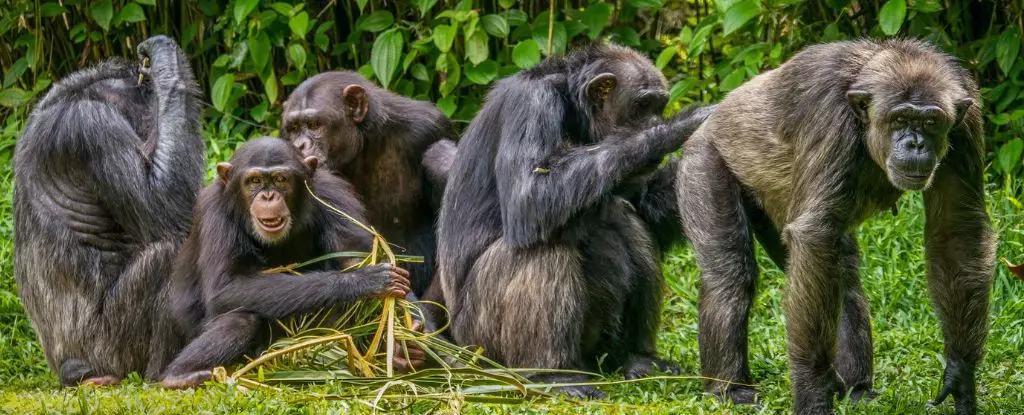In the intricate tapestry of social behaviors observed in primates, the phenomenon of synchronized urination stands out as a particularly intriguing yet overlooked aspect. A recent study highlights this behavior among chimpanzees, suggesting that the act of relieving oneself is not merely a physical necessity but an activity embedded with social significance. This research not only sheds light on our primate relatives but also provides a lens through which we can examine similar behaviors in humans, illustrating that even the most mundane actions can have complex social underpinnings.
Conducted at the Kumamoto Sanctuary in Japan, the study focused on a group of 20 captive chimpanzees. Researchers observed these chimps over 604 hours, carefully documenting instances of simultaneous urination, or “synchronized peeing.” Their findings reveal that this behavior tends to occur more frequently when one chimp, particularly a dominant individual, begins to urinate. The study established that proximity plays a significant role; when chimps were within three meters of one another, the likelihood of synchronized urination increased. This revelation supports the idea that such actions may be socially contagious, akin to behaviors such as grooming and play where social bonds are reinforced.
One of the most salient findings of this research is related to the influence of social hierarchy on behavior. Contrary to initial expectations that social bonds, such as grooming relationships, would dictate urination patterns, the results showed that lower-ranking individuals were more likely to imitate the urination of dominant chimps. This dynamic introduces a new dimension to our understanding of social interactions among primate groups. The researchers speculated that this behavior could reflect an instinctive response to the actions of a leader, emphasizing the potential for synchronized activities to strengthen group cohesion and establish social order.
Interestingly, the study draws parallels between chimpanzee behavior and human social habits. In human contexts, communal bathroom visits also occur frequently, often devoid of discomfort or shame. Some cultures even embrace social norms that encourage shared urination experiences, speaking to an understanding of safety, camaraderie, and perhaps an innate desire for connection in vulnerability. The Italian proverb “Whoever doesn’t pee in company is either a thief or a spy” and the Japanese term ‘Tsureshon’ signify a cultural acceptance of shared physiological needs that underscore the social aspect of this behavior.
As highlighted by the researchers, the overarching implications of these findings extend beyond mere curiosity about animal behavior. Understanding the social dimensions of urination can offer insights into how communal hygiene practices evolve in both human and animal societies. Beyond practical health impacts, such behaviors could deepen inter-individual connections, reinforcing hierarchies and relationships based on a shared experience. The act of urination becomes another thread in the social fabric that weaves together community cohesion, providing both evolutionary and anthropological perspectives on behavior.
The absence of prior studies on contagious urination reinforces the significance of this research. It opens the door to further exploration into how such behaviors manifest across different species and environments. Future studies could delve deeper into the motivations behind synchronized urination and investigate whether similar patterns exist in other social animals. Additionally, understanding the nuances of these behaviors in both primates and humans invites ecological and evolutionary inquiries that could reshape our perspective on social interactions.
The study of synchronized urination among chimpanzees offers profound insights into the social intricacies of animal behavior. By illustrating how even seemingly trivial acts are influenced by social structures and relationships, we gain a richer understanding of the dynamics that govern primate interactions. This research not only enhances our comprehension of chimpanzees but also prompts us to reflect on the interconnectedness of social behaviors across species, ultimately redefining our approach to studying the social fabric that binds us together.

